Why you can trust TechRadar
We spend hours testing every product or service we review, so you can be sure you’re buying the best. Find out more about how we test.
OnePlus Pad 3: one-minute review
As someone who has sworn by iPads and iPadOS for over a decade now, consider me pleasantly surprised to discover just how much fun it is to use the OnePlus Pad 3. For my particular use case, as someone who likes to use tablet computers for a mix of productivity during the day and catching up on YouTube and Netflix in my spare time, the Pad 3 provided me with quality of life features I didn’t even know I needed.
Smart suggestions from Open Canvas that let you split-screen apps in seconds, not to mention having up to three apps open at once with extra capacity for apps sitting in a floating window, all add up to a great experience that’s further emboldened by a bright screen and fantastic battery life.
When you factor in the additional cost of accessories, the complete OnePlus Pad 3 package can set you back a fair bit, and I still think that the entry-level iPad 10.9 is the best value option for more people where tablets are concerned. It’s also a shame that a lack of Android optimisation gets in the way of the grand ambitions of OxygenOS. If something can be done to make key Android apps function more appropriately in tablet form, then the OnePlus Pad 3 could make a fine case for arguably being the best Android tablet out there.
OnePlus Pad 3 review: price and availability
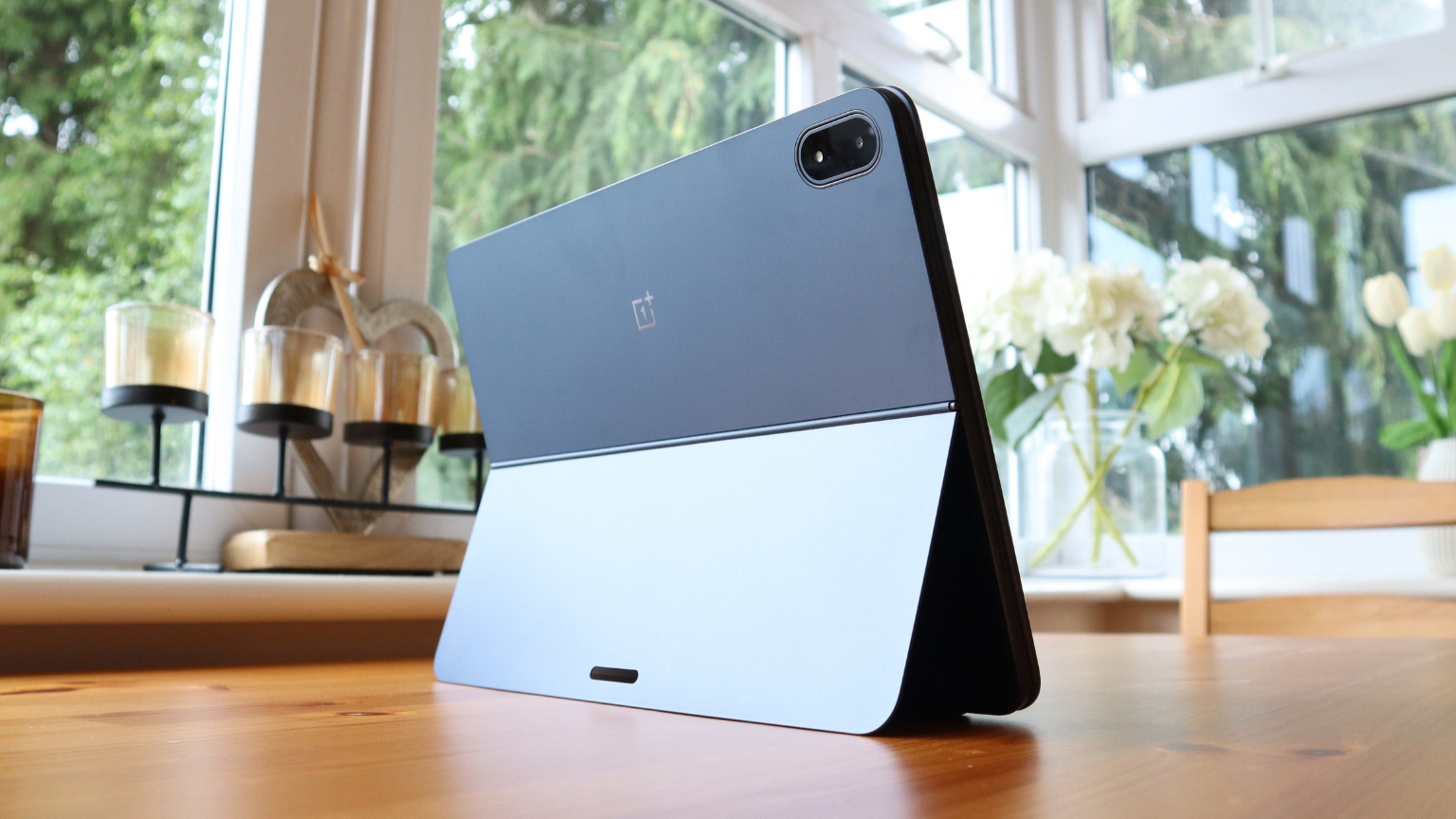
- Starts at $699 / £529 for 12GB of RAM and 256GB storage
- A 16GB RAM/512GB storage model is available in the UK, but not the US
You’d be justified for thinking that, with all the upgrades included and the current state of the world economy, that the OnePlus Pad 3 would bring about a hefty price increase over the OnePlus Pad 2, but thankfully that’s not the case.
The OnePlus Pad 3 boasts an entry level price of $699 / £529 for the 12GB RAM/256GB storage model, but that can leap up to £599 for the more robust 16GB RAM/512GB storage option.
Given that the OnePlus Pad 2 had a launch price of $549 / £499 at the checkout, seeing just a £30 uptick this time around (in the UK at least) isn’t too shabby, and I think it’s reasonable request when compared against the larger screen, faster processor, increased storage and improved speakers that you get with this newer model. Sorry, US users, but you know what you did.
What you do need to bear in mind however is that the OnePlus Pad 3 does not come bundled with any of its key accessories. In the US you get the 80W SuperVOOC charger, but in the UK you’ll only find OnePlus’ signature red USB-C cable included. This is where the cost can soar.
The OnePlus Pad 3 Stylo 2 will set you back $99 / £99, so you’ll have to factor that in for digital drawing or note-taking, while the OnePlus Pad 3 Smart Keyboard and Folio Case cost $199 / £169 and $49 / £59 respectively. Of course, you can always opt for cheaper alternatives to help mitigate that cost, such as eschewing the Smart Keyboard in favor of one of the best wireless keyboards, but for the most seamless experience where everything complements one another in design language, it can add up.
OnePlus Pad review: specs
Starting price | £529 |
Operating system | OxygenOS 15 |
Chipset | Qualcomm Snapdragon 8 Elite |
Memory (RAM) | 12GB/16GB |
Storage | 256GB/512GB |
Display | 13.2-inch 3.4k LCD, 144Hz |
Weight | 675g |
Battery | 12,140mAh |
Charging | 80W SUPERVOOC |
Cameras | 13MP main, 8MP front |
Pretty much all of the key areas have seen an upgrade over the OnePlus Pad 2. There’s now the much faster Snapdragon 8 Elite chipset under the hood which OnePlus claims to provide a 45% and 40% boost in CPU and GPU performance respectively.
Helping to power that chipset is an increase in the default amount of RAM, with the entry-level option now boasting 12GB instead of 8GB, and that’s also paired with a higher starting storage of 256GB as opposed to 128GB. In the UK there is an upgrade option with 16GB of RAM and 512GB of storage, but that model isn’t being sold in the US.
What’s sure to turn heads for those who use their tablets as all-day devices is the leap to a massive 12,140mAh battery which absolutely towers above the 9,510mAh cell found within the OnePlus Pad 2. There’s even an increase in charging speeds, now up to 80W, to help you fill up that larger battery even faster. In the US that faster charger comes in the box, but UK users will need to splurge on the faster plug.
OnePlus Pad 3 review: display

- Gorgeous 13.2-inch 3.2K LCD panel
- 7:5 ratio is helpful for multitasking
- Great depiction of colour
Because I’d become so used to using the much smaller iPad 10.9, which has been my go-to tablet for everything over the last few years, I was somewhat gobsmacked by the display that the OnePlus Pad 3 brings to the table. Sure, it’s not quite the 14.6-inch beast that you’ll find on the far pricier Samsung Galaxy Tab S10 Ultra, but the Pad 3’s 13.2-inch 3.2K LCD display is an eye-catcher for a handful of reasons.
At the surface level, it just looks great. Whether you’re simply admiring the collection of landscape photography that OnePlus offers up for potential wallpapers, or streaming one of the best Disney Plus shows, it all leaps out of the screen with a level of vibrancy that really makes the OnePlus Pad 3 a joy to use. Whenever I had to go back to using my Windows laptop, I always found myself irritated at the immediate downgrade in screen quality.
When I was diving into a bit of Call of Duty Mobile to test out the performance of the device, I ended up playing for quite a bit longer than I usually do just because of how great the game looks on the OnePlus Pad 3. Particle effects really pop thanks to the larger than average sizing, and your eyes are drawn to character models which are given their due thanks to the detailed 3.2K resolution.
The high density of pixels also means that fans of animation will love using this thing for entertainment. Diving into Disney Pixar’s Elemental, the opening scenes in Element City are an absolute feast for the eyes, with your attention drawn equally to what’s happening in the foreground and all the smaller moments of background action.
Because of the unique 7:5 aspect ratio, the OnePlus Pad 3 has just the right amount of height in its display to have multiple windows open at one time, all without any of them feeling too cramped to the point where you’re forced to zoom in. In the time that I’ve been using the tablet, I’ve probably come to value this feature the most as it means I can really maximise its capabilities as a productivity device. I never like to bring a laptop with me on holiday, but for something like this that works so well for both watching content and responding to emails, the OnePlus Pad 3 is exactly the type of device I’d pack in my suitcase.
OnePlus Pad 3 review: design
- Barely thicker than the USB-C port at the bottom
- Fairly mundane colour options
When you lay your hands on the OnePlus Pad 3, you’ll no doubt notice, before anything else, just how slim this thing is. As soon as I took it out of the box, I became far more cautious in my handling of the Pad 3 until I was able to encase it in the Smart Keyboard accessory that OnePlus sent along with it.
The OnePlus Pad 3 is just 5.97mm thick, which isn’t too far off the 5.1mm thickness of the iPad Pro 2024. Despite its larger than average display, the Pad 3 doesn’t weigh all that much in the hand either, coming in at only 675g. Thankfully, all of this means that, even with the Smart Keyboard in tow, the OnePlus Pad 3 feels wonderfully lightweight in your bag, and it’s very easy to carry around one-handed.
Unfortunately, there isn’t really anything here in the way of visual flare to elevate the OnePlus 3 from competing tablets. There are two colors available in the UK, Storm Blue (the same as the review unit) and Frosted Silver. The silver model won’t be sold in the US.
While I can’t speak for the latter, the Storm Blue looks anything but blue to my eyes, striking more as a darker grey. I know that this isn’t uncommon with tablets around this price range, but I would love to see more vibrant options like what you’ll find with the entry-level iPad 10.9.
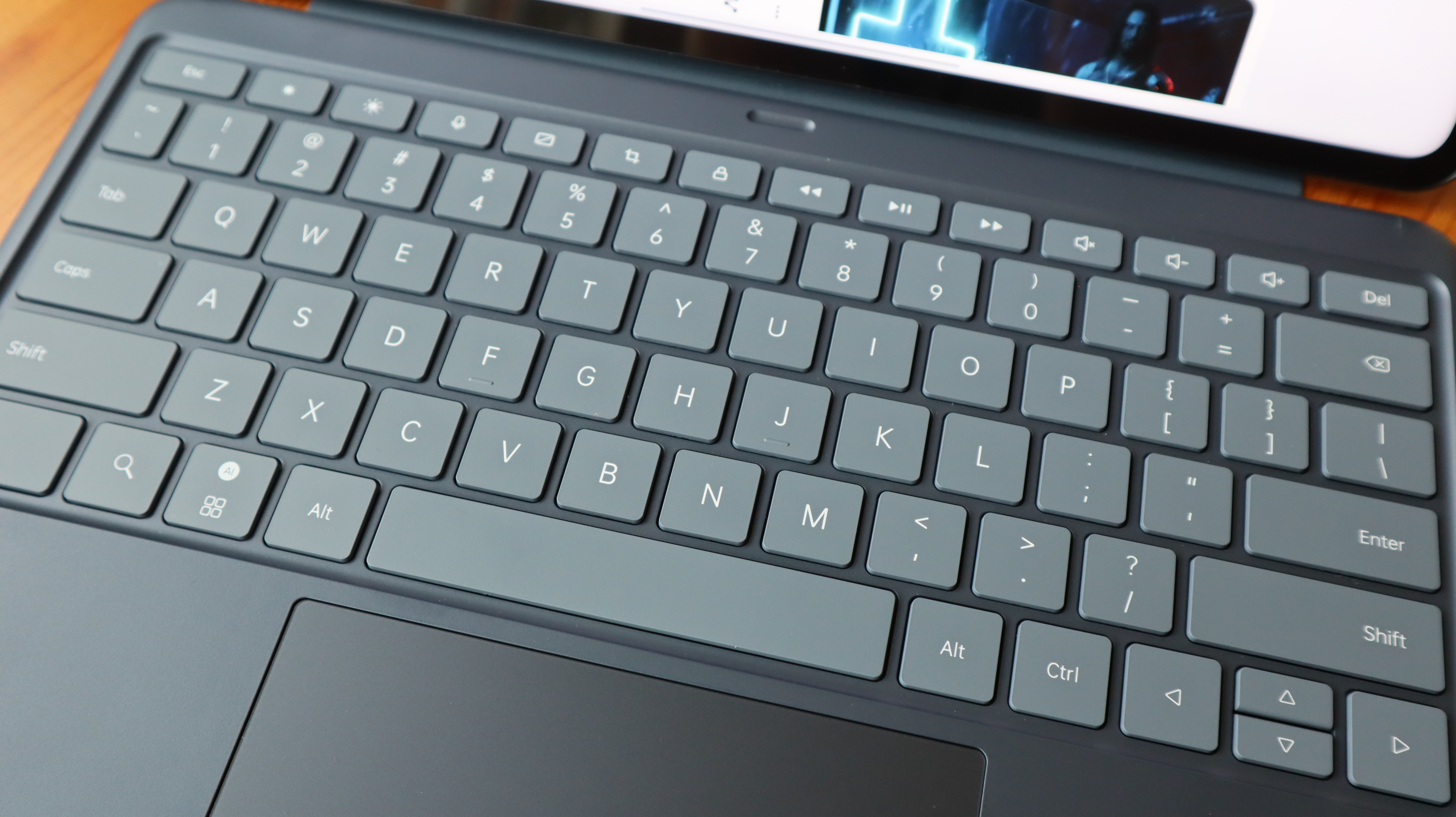
It also doesn’t help that the ‘all metal unibody’ of the tablet loves to pick up the occasional smudge, which is never a good look. I also think that the design of the Smart Keyboard accessory could use a bit of an overhaul.
The keyboard itself is fine once you get used to it, but it would be nice if the keys were less mushy and a bit more clicky, similar to what you’ll find on Apple’s Magic Keyboard. The material underneath the keyboard also doesn’t have much grip to it either, and when working at a standard office desk, I found it would slip and slide all over the place with just a slight nudge, which forced me to be a bit more considerate in my typing. This wasn’t the case everywhere that I took the Pad 3, but it’s something that I would like to see fixed in a successor.
OnePlus Pad 3 review: software
- Open Canvas is now better than ever
- Android still needs better optimisation on tablets
Software has long been the Achilles heel for almost all Android tablets when weighed up against the seamlessness of Apple’s iPadOS, but to give OnePlus its due, the company has done its best to close the gap with OxygenOS 15.
Compared to some of the more cumbersome Android interface options out there, OxygenOS is clean in its aesthetic and easy to understand in its UI so that, even if you’re someone who’s knee-deep in Apple’s ecosystem and considering picking up an Android tablet for the first time, you’ll get on just fine here.
OnePlus made the excellent decision last year to bring the impressive Open Canvas software (originally found on the OnePlus Open) over to the OnePlus Pad 2. This ingenious bit of tech means that you can easily have up to three apps open at the same time, which has been incredibly helpful whilst writing this review as it means I’ve been able to cross reference my own notes with OnePlus’ official press release without having to constantly minimize and reopen windows.
Open Canvas was already great, but it’s just been given a handy upgrade that now makes launching it even easier than before. If the Pad 3 notices that you’ve quickly jumped from one app to another, it will ask if you want to split-screen these apps so that they sit side by side. The moment you tap this notification, both apps appear instantly – it’s that simple.
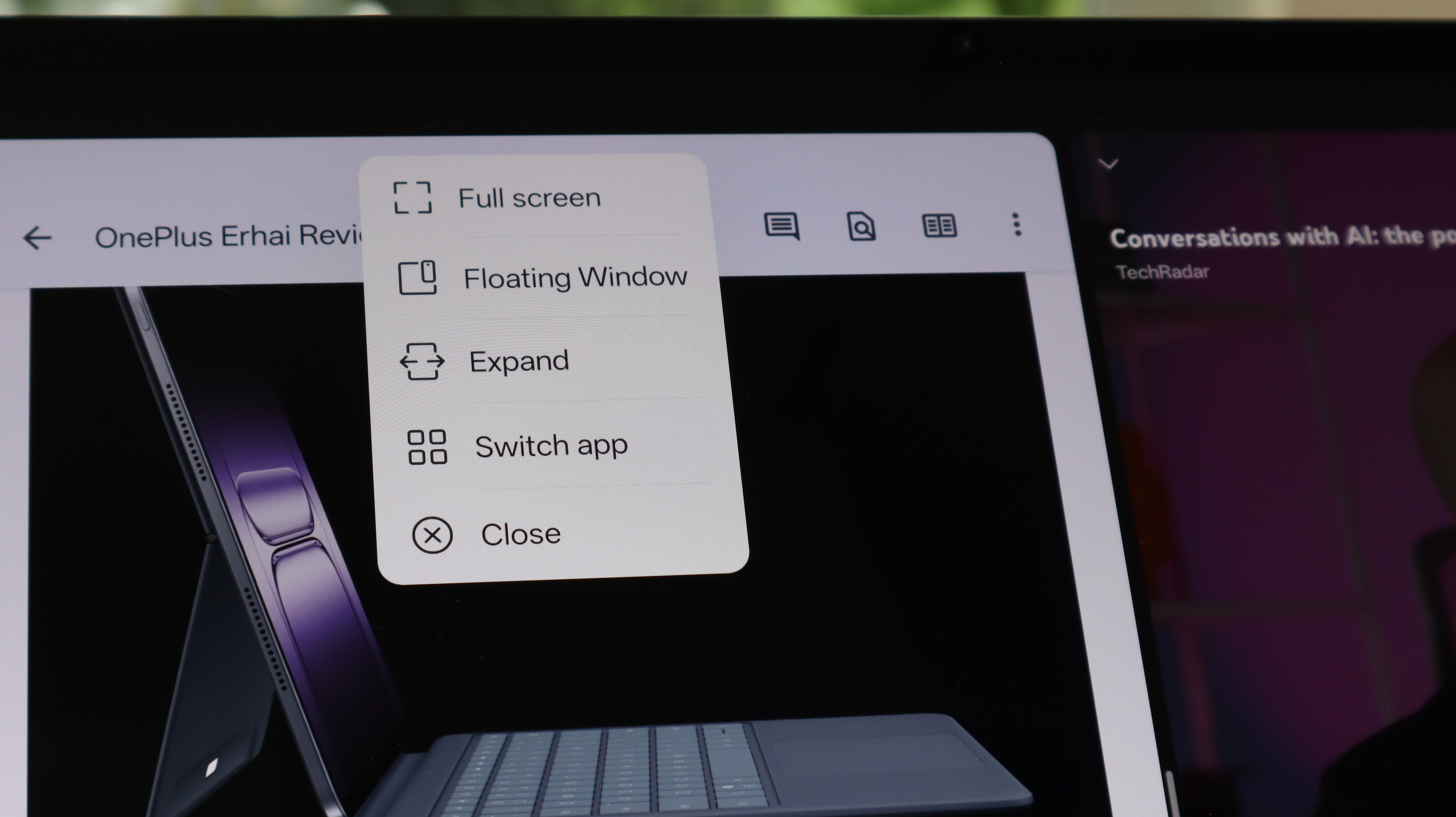
It’s such a small addition to the software but one that ended up saving me a decent chunk of time, and anything that helps to keep your flowstate going when you’re in the middle of a tough deadline is fine by me. Apple should take note and bring this to iPadOS in the future.
As great as Open Canvas is, the OnePlus Pad 3 doesn’t completely avoid the optimization problems that plague Android on tablets. Regardless of which device I’m using, I frequently rely on Google Docs and Notion, both of which had issues when trying to run on the Pad 3.
Initially, Notion wouldn’t let me type anything until I was forced to delete the app and then reinstall it, while Google Docs would just flat out refuse to recognize the scrolling gesture on the Smart Keyboard trackpad, so I’ve been forced to use the touchscreen whenever I’ve needed to move through a document.
What I will say is that for a lot of these web-based apps, they do work rather well when you run them in the Chrome browser, similar to how you would with one of the best Chromebooks, but it’s hardly ideal given that it’s never an issue I’ve had to deal with when using iPadOS.
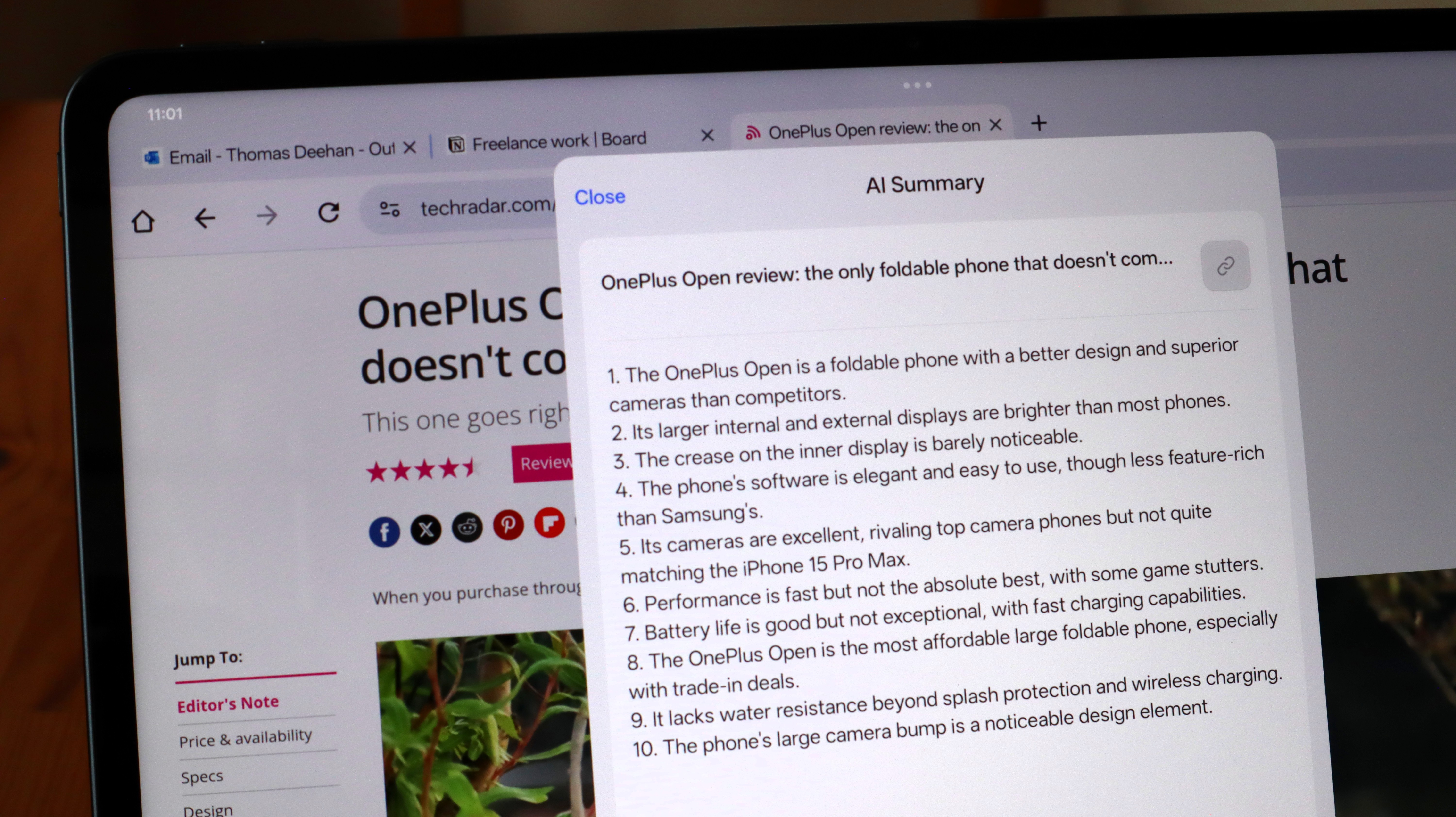
Unlike a lot of companies right now, OnePlus hasn’t gone so far into AI that it’s taken up the bulk of the upgrades, but there are some helpful AI features now baked into the ‘AI toolkit’ which appears when you’re browsing the web. This allows you to quickly summarise an article if you’re in a rush, or have an AI voice read out its contents for you, even as you dive into other apps. It’s unobtrusive yet well executed, so well done to OnePlus on this front.
OnePlus Pad 3 review: performance
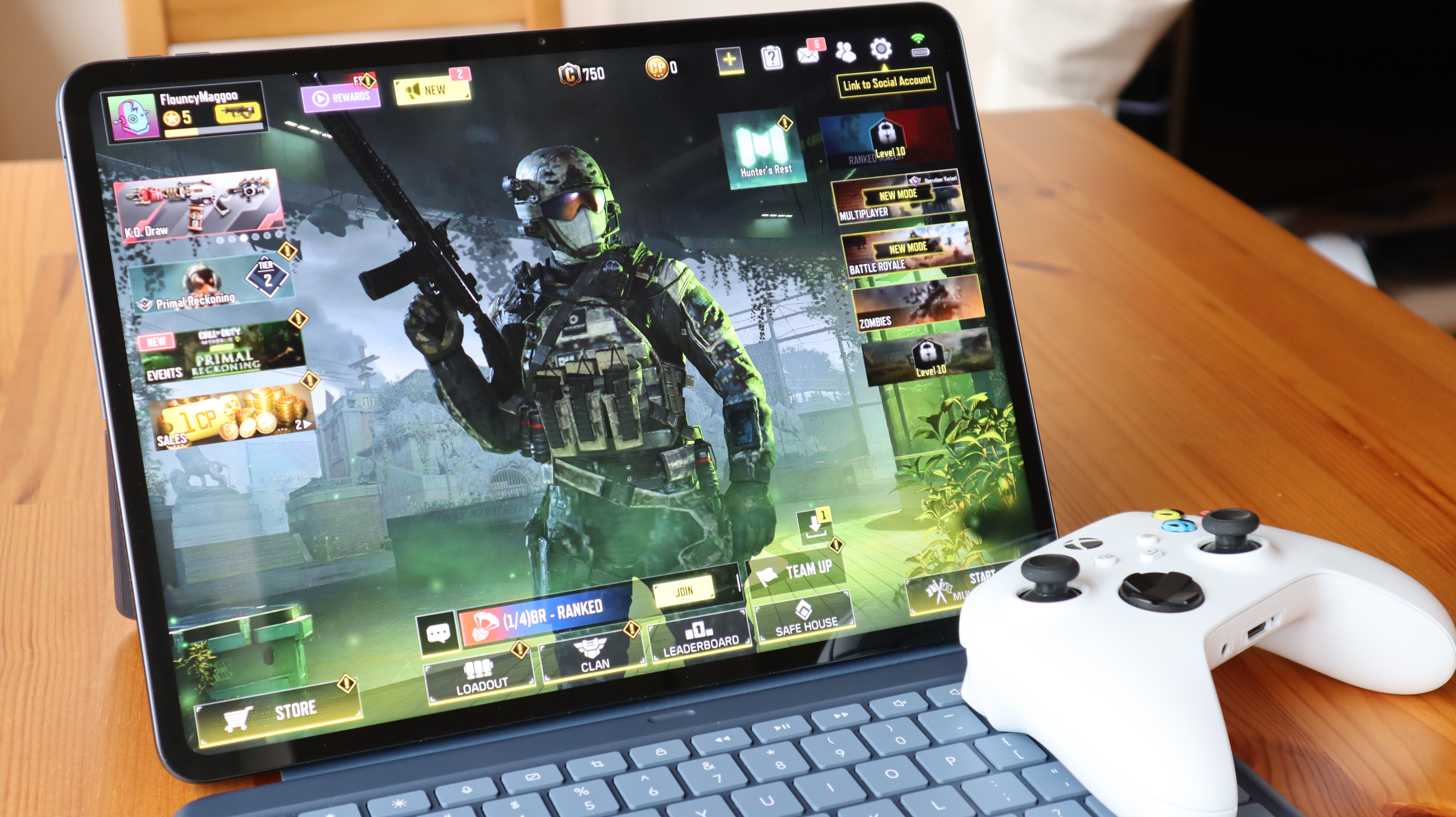
- Flagship performance thanks to the latest Snapdragon chip
- This is a tablet designed for multitasking
If you’ve already read the specs for the OnePlus Pad 3 then you may have raised an eye-brow at the inclusion of the super-powered Snapdragon 8 Elite chipset under the hood. Not only is this the same processor you’ll find in the best smartphones such as the Samsung Galaxy S25 Ultra and the Honor Magic 7 Pro, but it also represents a major leap in speed from what we’ve seen before.
As previously mentioned, the claim is that the 8 Elite can provide a 45% boost in performance to the CPU, and 40% for the GPU. That all sounds great on paper, but what difference does it make to the day to day experience? Plenty, as it turns out.
Just for context, this entire review has been written with the OnePlus Pad 3, and I’ve had Google Docs open alongside a PDF press release, and a Chrome window with several tabs. Occasionally I’ve had a WhatsApp overlay in the corner to quickly respond to messages, and at one point I had Disney Plus playing Avengers: Endgame on top of all these apps, and it didn’t break a sweat. Sure, it did look like some kind of pop-up-filled nightmare, but I was impressed to see no signs of slowdown. Simply put, if you’re after a productivity tablet that you can really push to the limits, you’ll get on well here.
The same can be said for gaming. Taking a quick break to enjoy a few rounds of Call of Duty Mobile with an Xbox controller connected via Bluetooth, the OnePlus Pad 3 kept up with every fast-paced moment and all the chaos that a typical match brings with it.
As a final point, I want to draw particular attention to the improved speakers on the OnePlus Pad 3. There are now eight speakers instead of four, and they collectively offer up the best sound I’ve ever come across on a tablet. Layers feel separated so that they each have noticeable depth, and vocals are elevated to make watching shows and films a really enjoyable experience.
OnePlus Pad 3 review: battery
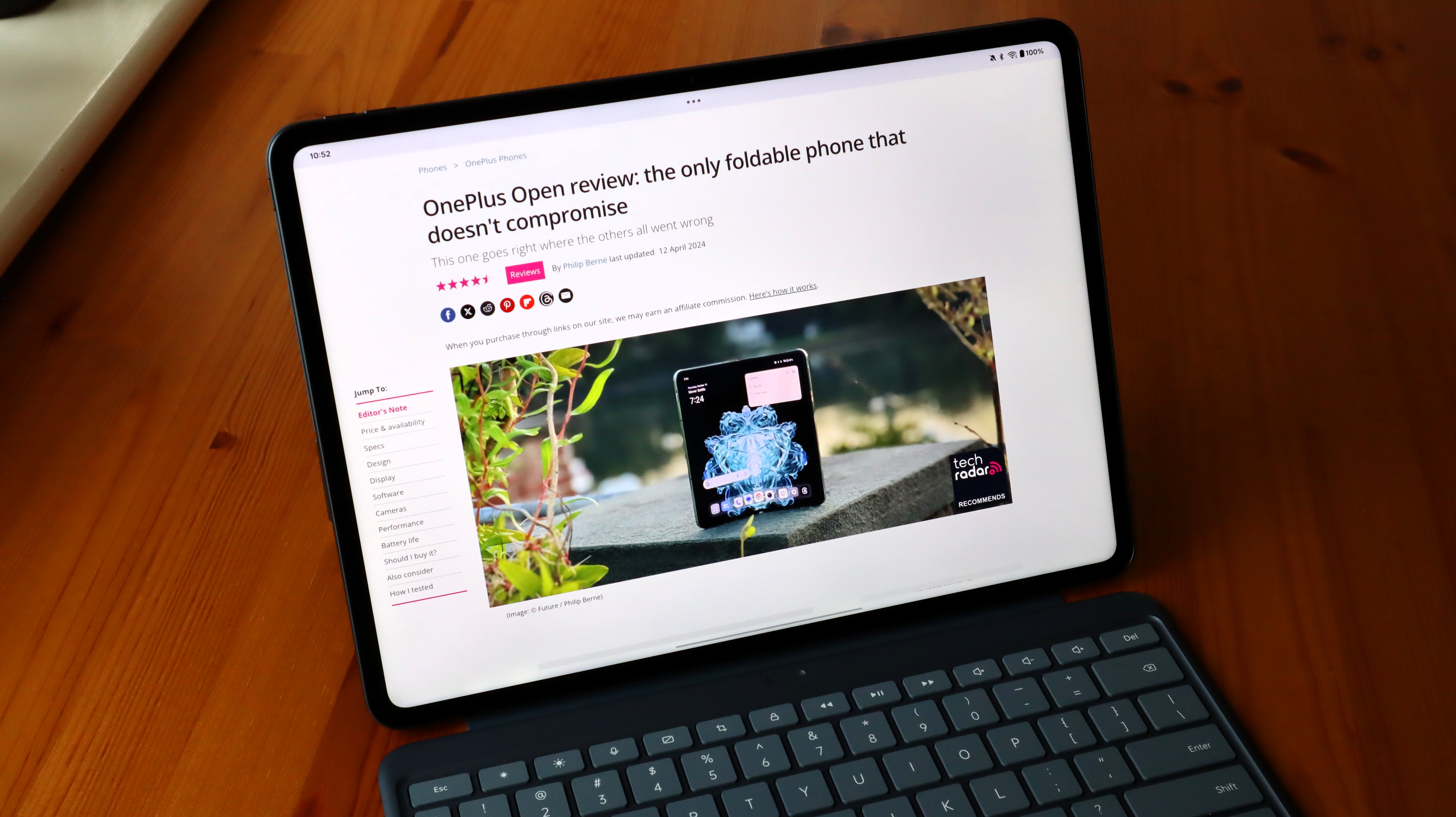
- Charging speeds and battery capacity have been upgraded
- No charging brick included
While there have been plenty of upgrades elsewhere, OnePlus has still made sure not to forget about the battery and charging experience. The headline upgrade here is the change to a much larger 12,140mAh battery which OnePlus claims can play triple-A games for six hours, or endure video playback for more than 17-hours. That’s definitely impressive, but I think that the proof is in how it can handle a bit of everything over the course of a day.
Beginning my test at 9:30am, I used the OnePlus Pad 3 as my main work device for typing documents and responding to emails, but over the course of six hours of screen-on time, downloading apps, watching 30-mins of Disney Plus and similarly playing games for 30-minutes, I was able to make it to 5:30pm with about 35% battery left in the tank. Of course, the average work day (for myself at least) doesn’t tend to have quite so much time set aside for entertainment, but to still have 35% remaining leaves me with plenty of confidence for the days when I want to hunker down with work.
Charging is a bit of a different story. The OnePlus Pad 3 now support fast charging up to 80W, up from 67W on the OnePlus Pad 2, but you’ll need to buy a compatible charger separately in order to hit those speeds.
For my charging test, I had a 65W charger to hand (which is still faster than most), and managed to get the Pad 3 from 5% battery to 100% in 121 minutes. It took about an hour to reach 56% so if you are strapped for time, that should give you enough power to get through a day with the power saver mode switched on.
Should you buy the OnePlus Pad 3?
Attributes | Notes | Rating |
|---|---|---|
Value | For all the upgrades the OnePlus Pad 3 packs, its small price increase is easily justified. | 4 / 5 |
Display | The increased size and unique aspect ratio make the display ideal for work and entertainment | 5 / 5 |
Design | The Pad 3 is incredibly thin and light to the touch, but its overall design isn’t too inspiring | 4 / 5 |
Software | OxygenOS is brilliantly intuitive, but Android still needs some work for tablets | 4 / 5 |
Performance | The Snapdragon 8 Elite chipset makes short work of multitasking and gaming | 5 / 5 |
Battery | Plenty of longevity but charging can be slow if you don’t buy an appropriate fast charger | 4 / 5 |
Buy it if…
Don’t buy it if…
Also consider
Not convinced by all the OnePlus Pad 3 has to offer? Here are some alternatives worth checking out:
| Header Cell – Column 0 | OnePlus Pad 3 | Apple iPad 10.9 (2022) | Samsung Galaxy Tab S9 Ultra | Header Cell – Column 4 |
|---|---|---|---|---|
Price | £529 | $349 / £329 | $1,199.99 / £1,199 (now regularly discounted) | Row 0 – Cell 4 |
Base storage | 256GB | 64GB | 256GB | Row 1 – Cell 4 |
Screen size | 13.2-inch 3.4k LCD, 144Hz | 10.9-inch LCD, 60Hz | 14.6-inch AMOLED, 120Hz | Row 2 – Cell 4 |
Chipset | Snapdragon 8 Elite | Apple A14 Bionic | Qualcomm Snapdragon 8 Gen 2 | Row 3 – Cell 4 |
Battery | 12,140mAh | 7,606mAh | 11,200mAh | Row 4 – Cell 4 |
Charging | 80W | 28.6W | 45W | Row 5 – Cell 4 |
Cameras | 13MP main, 8MP front | 12MP main, 12MP front | 13MP main, 8MP ultra wide, plus 12MP wide and 12MP ultra wide front sensors | Row 6 – Cell 4 |
OS | OxygenOS w/ Android 15 | iPadOS 18 | One UI with Android 15 | Row 7 – Cell 4 |
How I tested the OnePlus Pad 3
I used the OnePlus Pad 3 over a nine-day testing period, using it in my home office, connected to my home Wi-Fi, and also at a local cafe whilst using my OnePlus Open as a hotspot.
Testing the full speed of its 80W fast charging wasn’t possible due to only having a 65W adapter available over the course of this review, which should be taken into consideration when analysing the battery results.
When testing out the gaming performance of the OnePlus Pad 3, I played Call of Duty Mobile, GTA: San Andreas The Definitive Edition, and Dead Cells: Netflix Edition, all with a wirelessly connected Xbox controller.
First reviewed June 2025


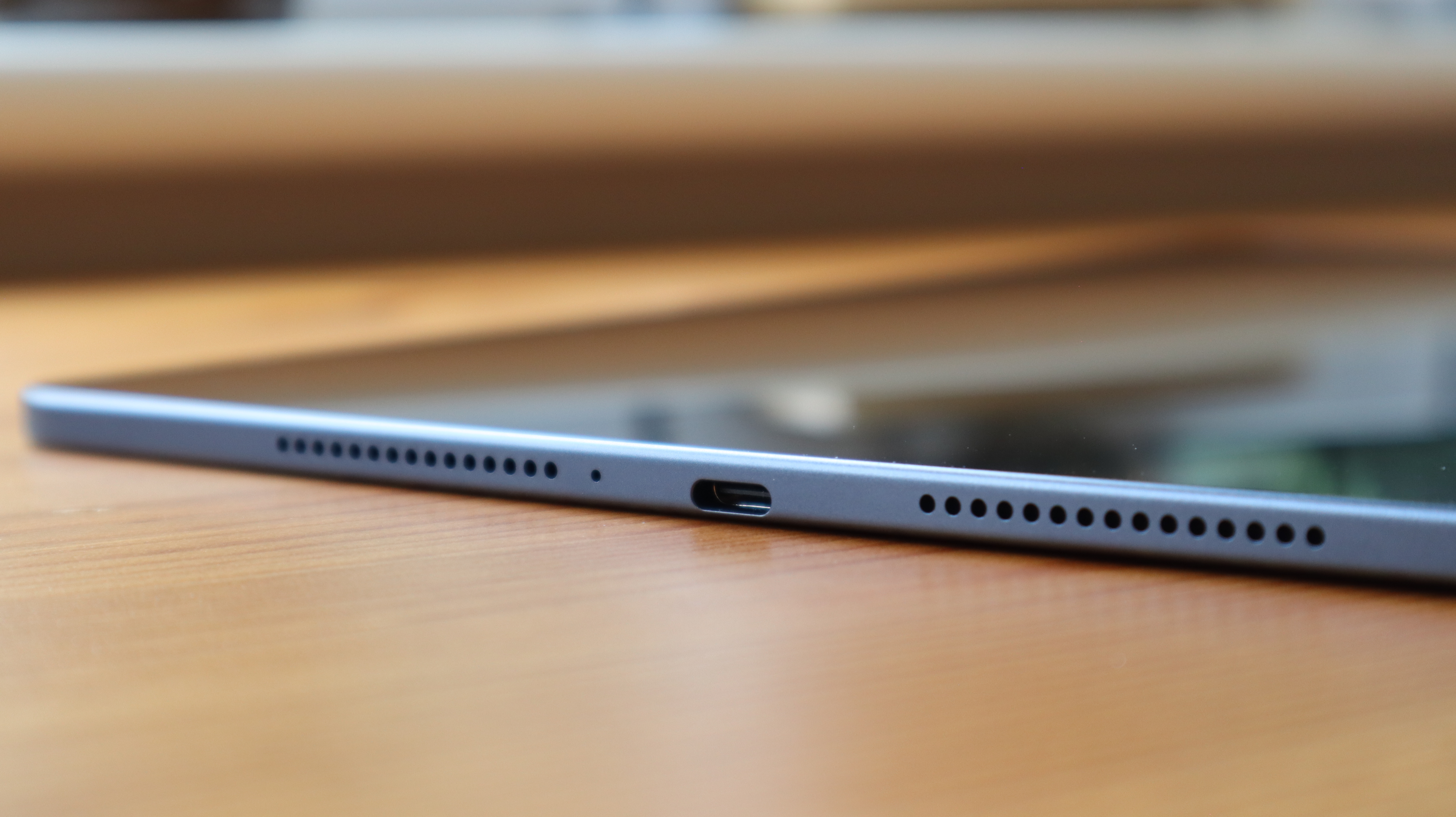
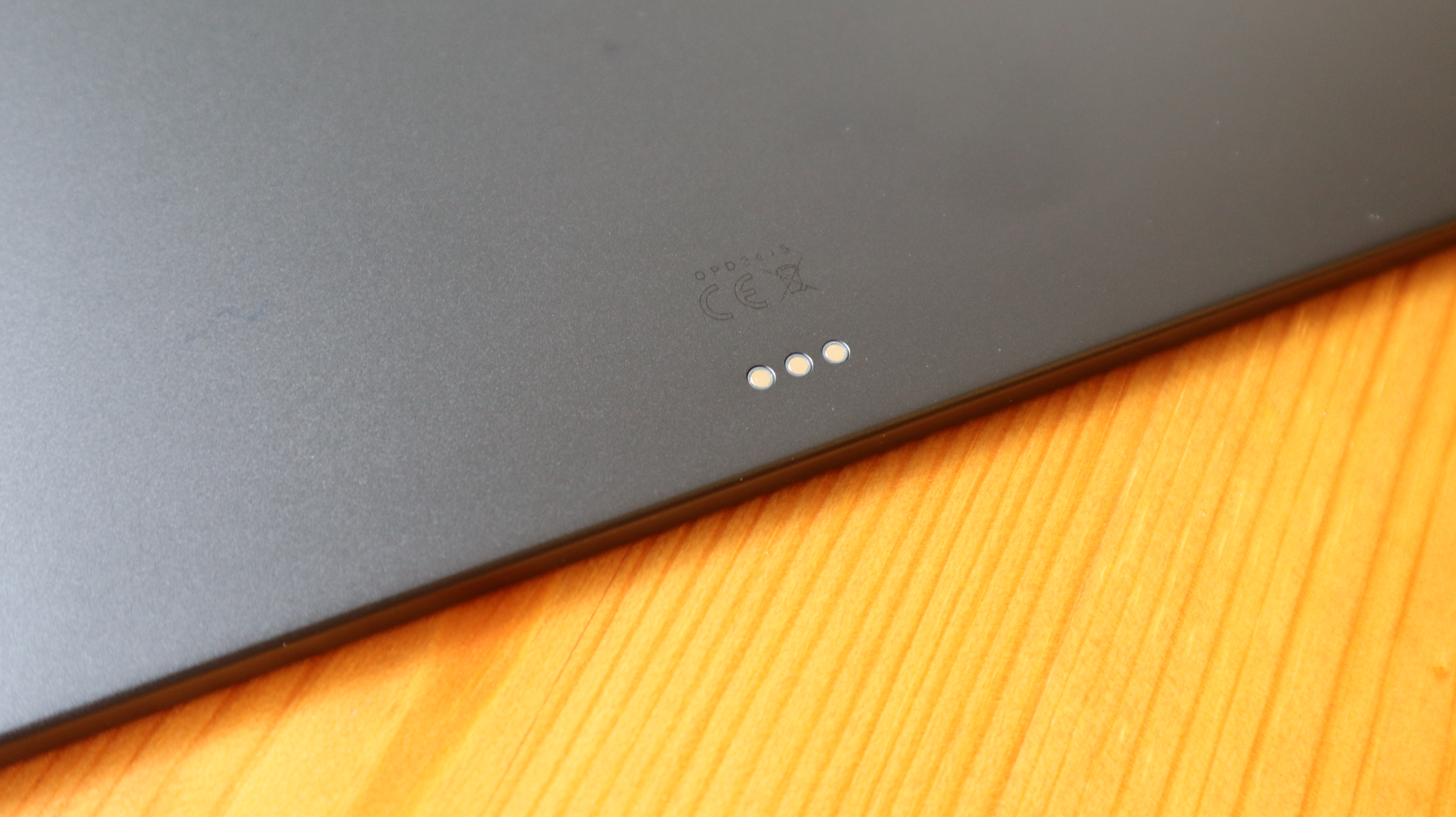
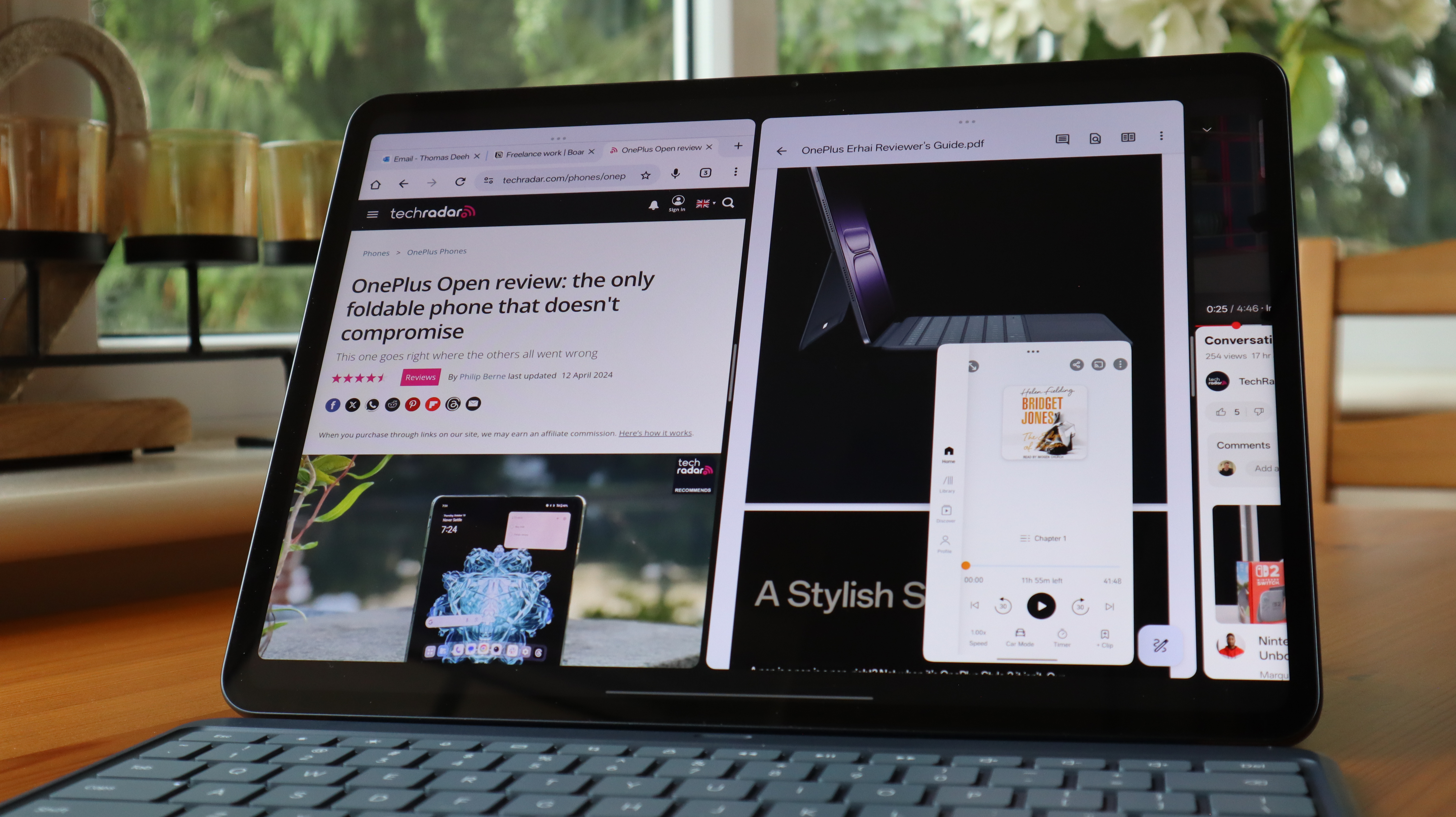
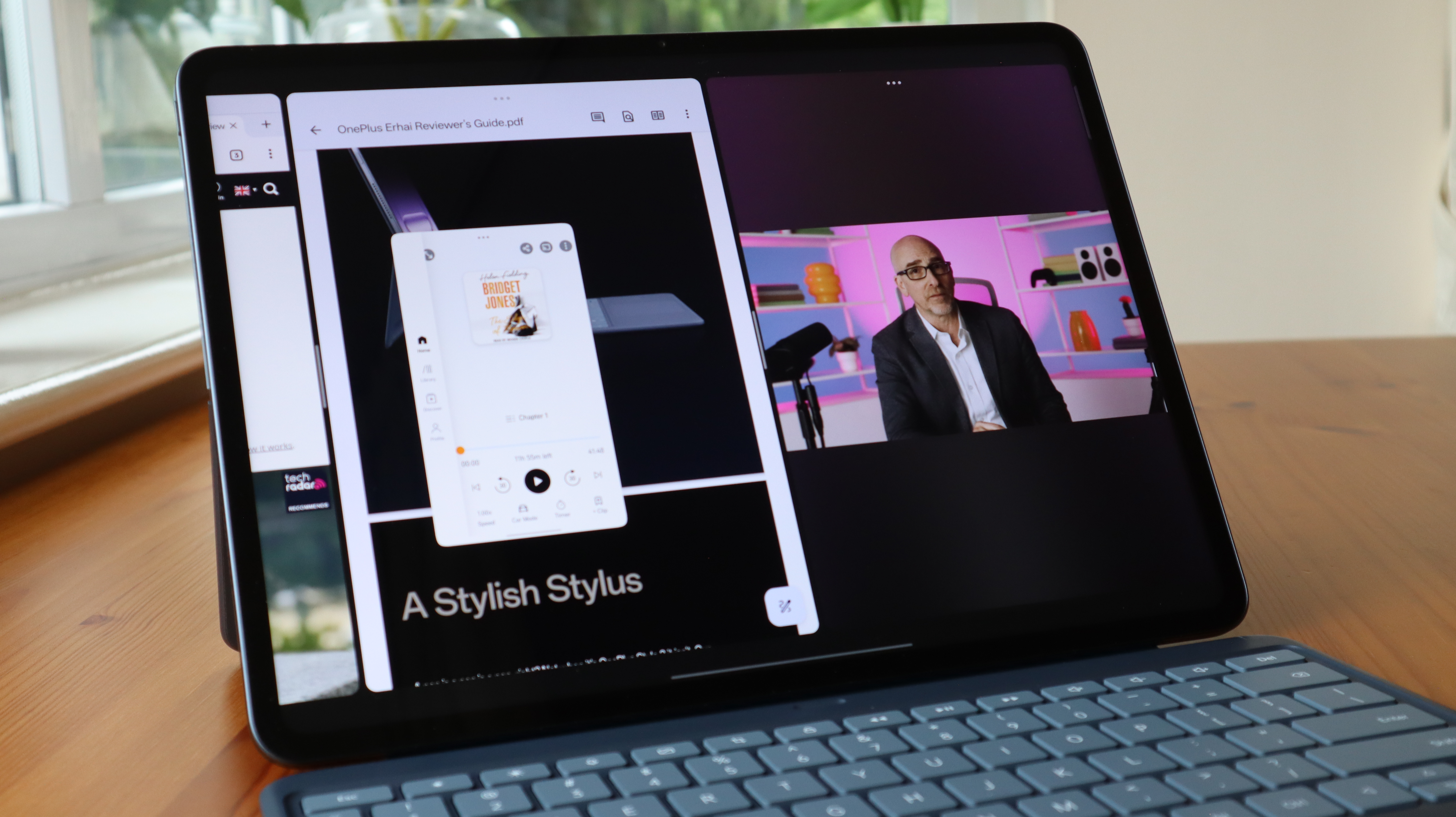





Leave a Comment
Your email address will not be published. Required fields are marked *